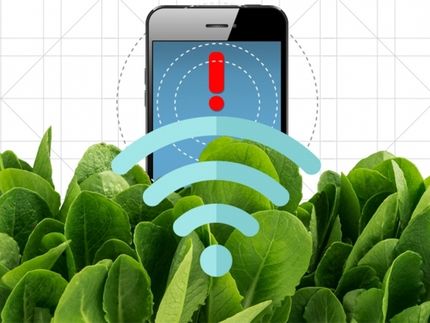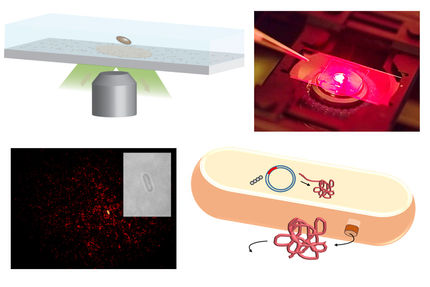MIT nanotubes sniff out cancer agents in living cells
Chemical engineers use carbon nanotubes to monitor chemotherapy, detect toxins at the single-molecule level
MIT engineers have developed carbon nanotubes into sensors for cancer drugs and other DNA-damaging agents inside living cells. The sensors, made of carbon nanotubes wrapped in DNA, can detect chemotherapy drugs such as cisplatin as well as environmental toxins and free radicals that damage DNA.
"We've made a sensor that can be placed in living cells, healthy or malignant, and actually detect several different classes of molecules that damage DNA," said Michael Strano, associate professor of chemical engineering and senior author of a paper on the work appearing in Nature Nanotechnology .
Such sensors could be used to monitor chemotherapy patients to ensure the drugs are effectively battling tumors. Many chemotherapy drugs are very powerful DNA disruptors and can cause serious side effects, so it is important to make sure that the drugs are reaching their intended targets.
"You could figure out not only where the drugs are, but whether a drug is active or not," said Daniel Heller, a graduate student in chemical engineering and lead author of the paper.
The sensor can detect DNA-alkylating agents, a class that includes cisplatin, and oxidizing agents such as hydrogen peroxide and hydroxyl radicals. Using the sensors, researchers can monitor living cells over an extended period of time. The sensor can pinpoint the exact location of molecules inside cells, and for one agent, hydrogen peroxide, it can detect a single molecule. The new technology takes advantage of the fact that carbon nanotubes fluoresce in near-infrared light. Human tissue does not, which makes it easier to see the nanotubes light up.
Each nanotube is coated with DNA, which binds to DNA-damaging agents present in the cell. That interaction between the DNA and DNA disruptor changes the intensity and/or wavelength of the fluorescent light emitted by the nanotube. The agents produce different signatures that can be used to identify them.
"We can differentiate between different types of molecules depending on how they interact," Strano said.
In future studies, the researchers plan to use the sensors to study the effects of various antioxidants, such as the compounds in green tea, and learn how to more effectively use toxic chemotherapy drugs.
Most read news
Topics
Organizations
Other news from the department science

Get the analytics and lab tech industry in your inbox
By submitting this form you agree that LUMITOS AG will send you the newsletter(s) selected above by email. Your data will not be passed on to third parties. Your data will be stored and processed in accordance with our data protection regulations. LUMITOS may contact you by email for the purpose of advertising or market and opinion surveys. You can revoke your consent at any time without giving reasons to LUMITOS AG, Ernst-Augustin-Str. 2, 12489 Berlin, Germany or by e-mail at revoke@lumitos.com with effect for the future. In addition, each email contains a link to unsubscribe from the corresponding newsletter.






















































